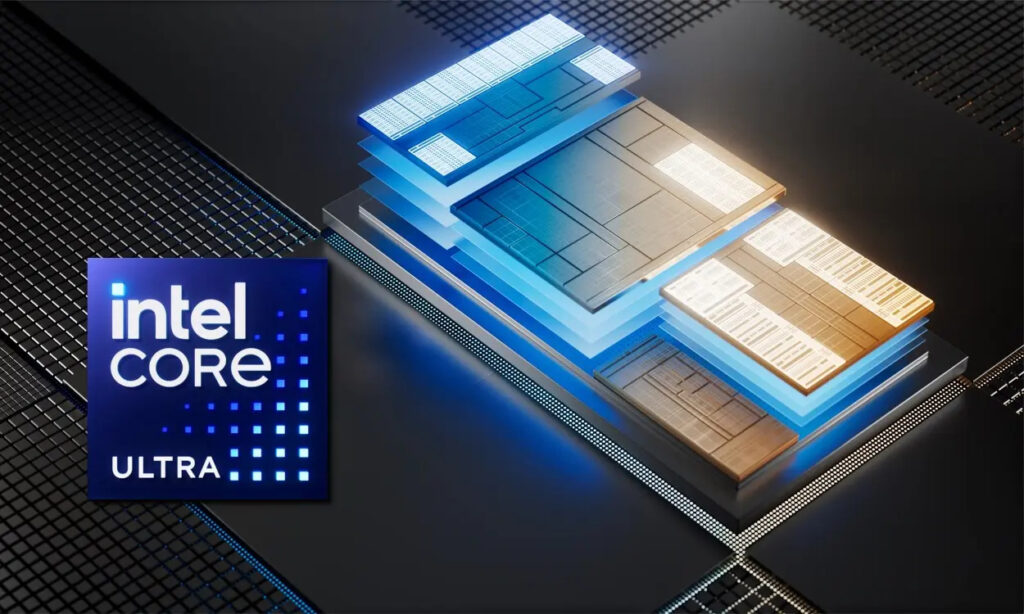
Intel introduced the Meteor Lake architecture a few months back without disclosing specifics about the processor variants. Now, Intel has unveiled the names of the latest 14th Gen processors set to drive forthcoming next-generation laptops.
These newly revealed CPUs are slated to feature in 2024’s upcoming laptops from leading OEMs such as Asus, Samsung, Lenovo, MSI, and others. We delve into the details of the new 14th Gen CPUs, outlining their specifications. Subsequently, we’ll explore the Meteor Lake architecture in depth, highlighting its latest innovations and advancements.
Intel 14th Gen Meteor Lake: Specs & CPU Variants
The upcoming 2024 laptops will feature Intel’s 14th Gen Meteor Lake CPUs. The CPU lineup spans from the top-tier Intel Core Ultra 9 to the more entry-level Intel Core variants. Among these, only the Core Ultra H-Series chips will integrate an on-board Intel Arc GPU, featuring varying Xe Cores, GPU frequencies, and other distinctions. Notably, both the Intel Core Ultra H-Series and U-Series will include an embedded neural processor called Intel AI boost.
Below, you’ll find the specifications for the entire Intel Core Ultra processor lineup, including details on core configurations (P-core/E-core/LP E-core). All these Core Ultra processors support either DDR5-5600MHz or LPDDR5/x-7464MHz RAM.
The DDR5-equipped systems can accommodate up to 96GB of memory, while LPDDR5/x-equipped systems max out at 64GB. As for upgradeability, specifics about how it will function remain unclear at this point.
Intel Core Ultra (H-Series)
A crucial Intel note emphasizes that the Intel Arc GPU will solely be available on systems configured with 16GB of RAM in a dual-channel setup. Failure to meet these specifications or pairing the Core Ultra CPU with an inadequate configuration could lead to a bottleneck. Furthermore, the new Intel Core Ultra H-Series CPUs can be configured up to 64/115W, contingent on the cooling capability and feature set of individual laptops.

The power limits for these CPUs will vary, particularly in higher-end laptops targeted at achieving superior performance. Enhanced power limits in these high-performance laptops with the same chip are expected to deliver better performance, capitalizing on increased power thresholds. Now, shifting focus to the U Series.
Intel Core Ultra (U-Series)
2024 laptops will also feature the Intel Core Ultra U-Series chips, distinct from the H-Series but carrying their own set of advantages. These chips will be integrated into the thinnest and lightest laptops in the lineup.

Compared to their H-Series counterparts, the base and turbo power limits for the U-Series Core Ultra processors are notably lower. Additionally, while the H-Series exclusively receives the Arc graphics card, the U-Series is equipped with basic Intel Graphics, featuring fewer Xe cores and lower GPU frequencies.
The Core Ultra 9 185H, Core Ultra 7 164U, and Core Ultra 5 134U are slated for a later release, with Intel projecting their availability in Q1 2024.
While there isn’t an immediate successor to the Core i9, these chips will soon debut across a range of new laptops. Intel has indicated that the 14th Gen Meteor Lake CPUs will be available starting today, December 14th. They’ve listed various retailers and OEM partners. Keep an eye out in the coming days at local retailers or online platforms like Amazon to check for the launch of Meteor Lake in your region!
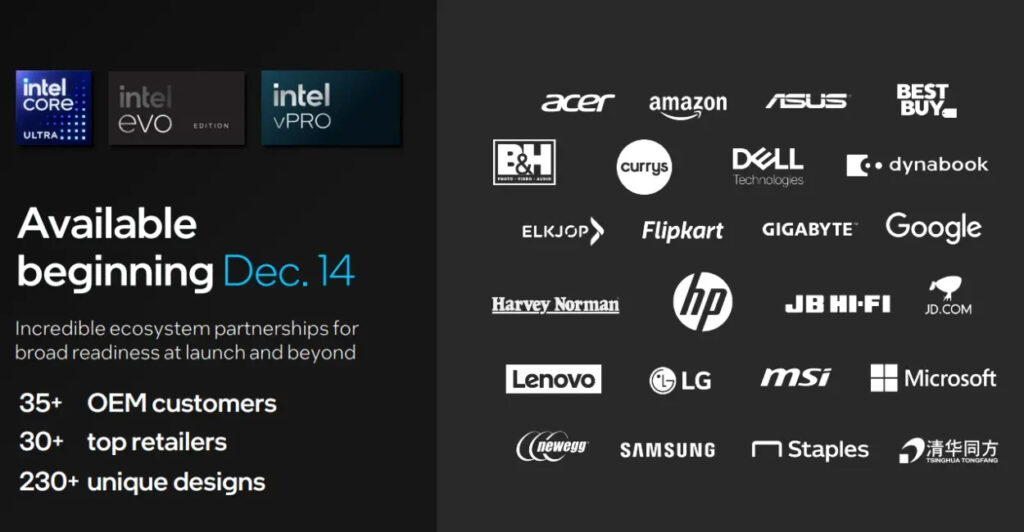
Performance Benchmarks of Intel 14th Gen Meteor Lake
Intel reports an 8% improvement in multi-threaded CPU performance for the new Core Ultra chips. Specifically, the Core Ultra 7 165H showcases this enhancement when compared to the 13th Gen Core i7-1370P in SPECrate 2017. Moreover, the single-threaded CPU performance has seen a boost, demonstrating a 12% advancement compared to its AMD counterpart, the Ryzen 7 7840U. However, it’s noteworthy that in terms of purely single-threaded performance, this specific CPU (165H) appears marginally slower than the i7-1370P.
Regarding graphics performance, the Intel 14th Gen Meteor Lake offers up to a twofold increase in speed compared to the previous 13th Gen CPUs. Intel asserts that content creation experiences a 41% speed enhancement based on the Puget Bench test for Adobe Premiere Pro.
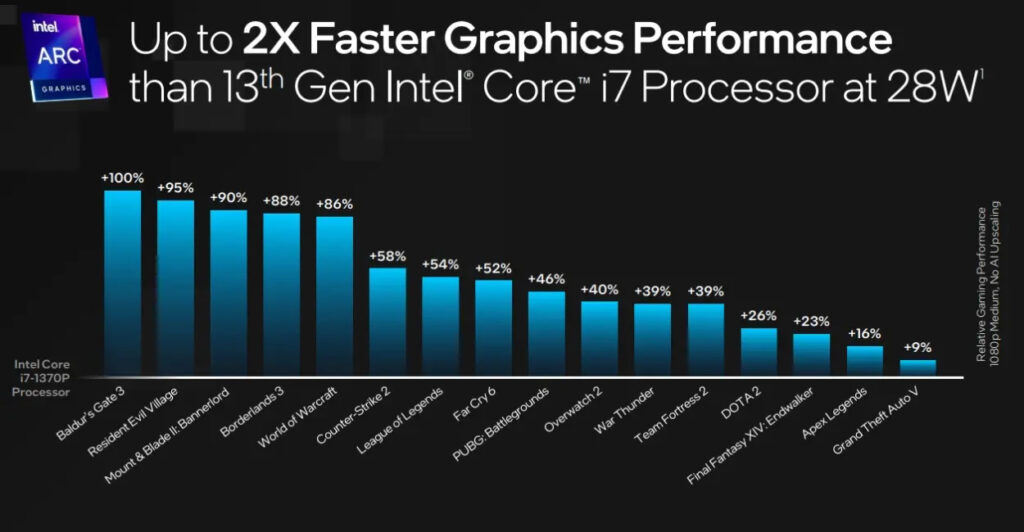
The performance benchmarks of the Intel 14th Gen showcase its capabilities across various tasks, leveraging the entirety of the chip, inclusive of the integrated Meteor Lake Arc GPU, the new NPU chip for AI acceleration, and the compute tile P-Cores & E-cores.
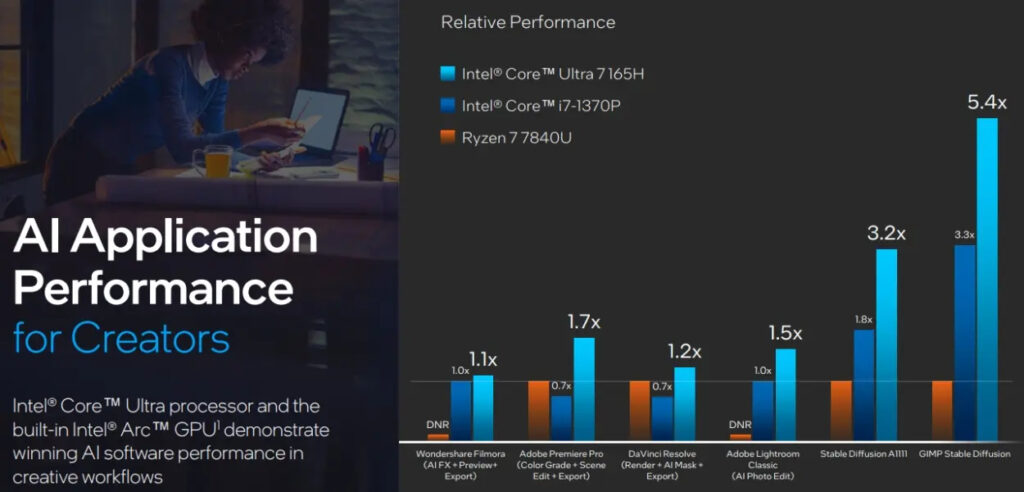
The latest architecture from Intel introduces significant efficiency improvements, leading to the rebranding of processors. With the advent of Meteor Lake, Intel is abandoning the ‘i’ from its processor naming scheme. The higher-end variants will be termed Intel Core Ultra, while the base variants will simply be known as Intel Core.
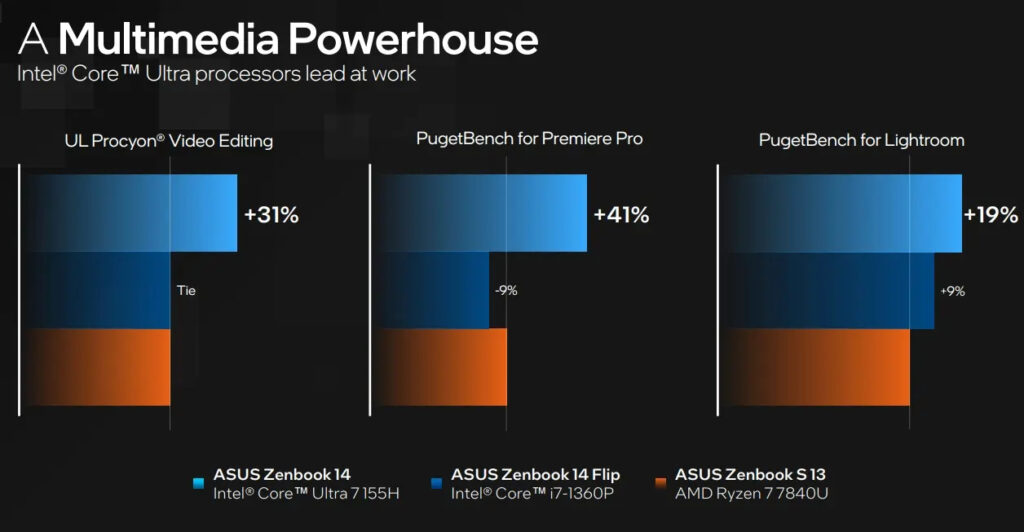
Intel claims that the Intel Meteor Lake (Core Ultra 7 165H) consumes up to 79% less power compared to the AMD Zen 4 (Ryzen 7 7840U) at 28W. Notably, the AMD processor is manufactured on TSMC’s 4nm process. This suggests that the 14th Gen Meteor Lake CPUs, built on Intel’s 4 manufacturing process, are poised to offer even greater power efficiency.
Intel 14th Gen Meteor Lake CPUs: What’s New?
Intel’s 14th Gen marks the introduction of the Intel 4 process, incorporating EUV lithography, offering a 20% increase in power efficiency, and unveiling Intel’s innovative 3D Performance Hybrid Architecture. This latest architecture signifies a significant step forward in Intel’s technological vision with the Meteor Lake design.
AI takes center stage in the new Intel processors. Within the Meteor Lake architecture lies a novel NPU chip, prominently featured in the Task Manager. This miniature powerhouse is specifically designed for AI tasks on Windows PCs, enabling offline AI processing. The entire chip is engineered with a dedicated focus on AI, with Intel boasting about the presence of ‘three AI engines‘ within Meteor Lake.

On the software front, significant enhancements have been made in scheduling, particularly in the allocation of CPU cores to ongoing tasks. Intel’s Thread Director constantly provides feedback to the operating system, resulting in optimized decision-making in task scheduling.
Hardware-wise, Intel has introduced a highly dynamic architecture and a novel type of core known as the Low Power Island (LP E-cores). This LP E-core resides within the SoC tile of the Intel 14th Gen, separate from the compute tile that houses the primary P-Cores & E-Cores. The LP E-core specializes in handling background tasks and can efficiently manage activities like video playback while consuming minimal power. Laptops featuring the Intel 14th Gen Meteor Architecture are expected to exhibit notable efficiency improvements owing to the inclusion of this new core type.
The automatic allocation of cores, tailored to specific tasks, is seamlessly managed by the CPU and operating system. According to Intel, during Netflix video playback, the 14th Gen Core Ultra 7 165H consumes 1150mW (1.15W), whereas the previous 13th Gen (i7-1370P) consumes 1540mW (1.54W) in the same task, highlighting the improved power efficiency of the new generation.
Regarding the compute tile, it introduces the new Redwood Cove (P-cores) and Crestmont (E-cores). These new P-Cores exhibit substantial advancements in performance-per-watt metrics. Additionally, the updated E-Cores now feature VNNI acceleration.
The E-Cores significantly enhance AI workloads by accelerating the VNNI (Vector Neural Network Instruction) instruction set, crucial for machine learning and artificial intelligence inference tasks.
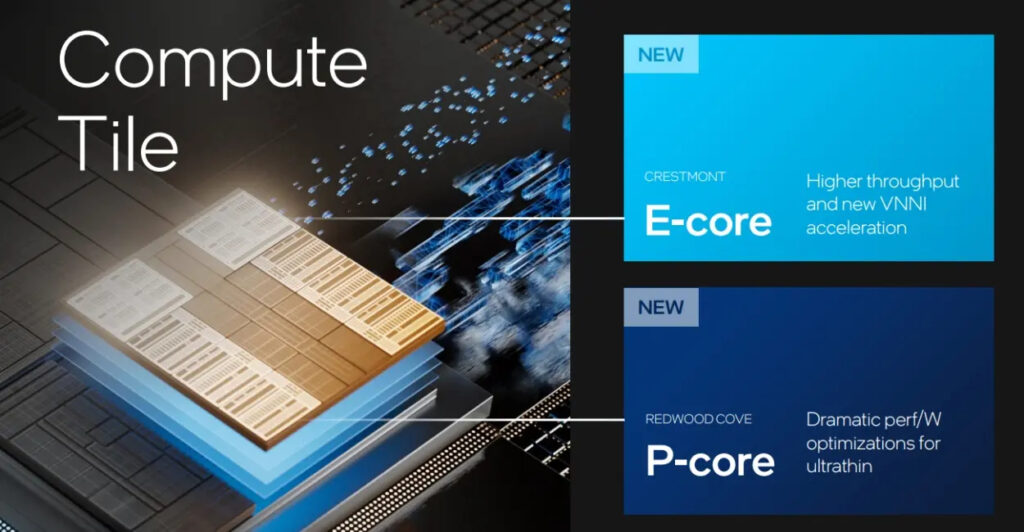
Regarding connectivity enhancements, Intel is making substantial upgrades in this domain as well. The Intel 14th Gen Meteor Lake introduces support for WiFi 7, a significant leap in wireless technology. Additionally, it enables 5 Gig networking, expanding connectivity capabilities. Notably, AI’s pervasive influence extends to connectivity optimization, as Intel plans to incorporate AI-powered connection optimization software into these new processors.
Absolutely, the latest processors from Intel will feature Bluetooth 5.4, incorporating advanced capabilities such as LE audio for high-quality sound at low power, multi-stream functionalities, and accessibility enhancements designed to benefit PC users with hearing impairments. Additionally, these processors will continue to support Thunderbolt 4, as seen in the previous generation. There’s anticipation that future iterations, possibly the 15th Gen, might introduce Thunderbolt 5.
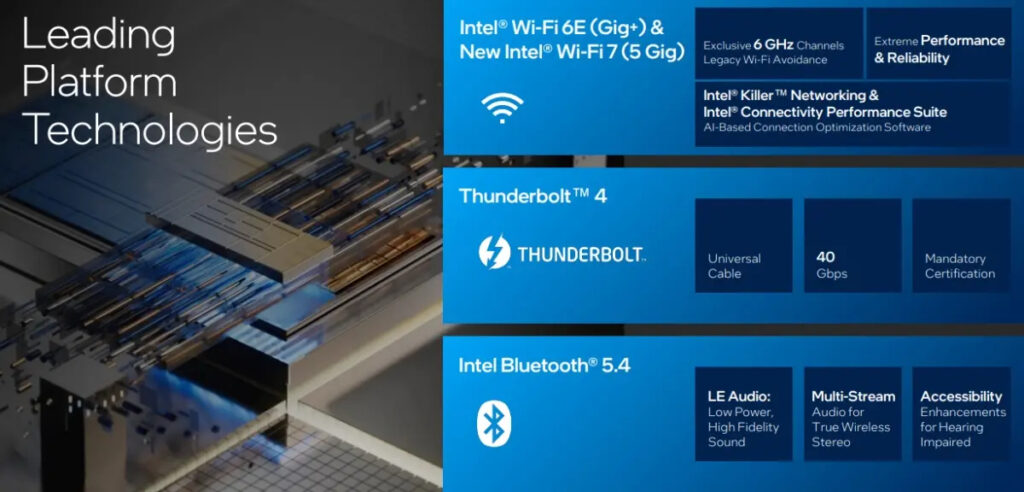
Intel has indeed maintained its core manufacturing process for quite a while. The preceding CPU architectures, Alder Lake (12th Gen) and Raptor Lake (13th Gen), were both based on the Intel 7 process. With the forthcoming Intel 14th Gen Meteor Lake, there’s a significant shift to the Intel 4 process, signifying a pivotal advancement in their manufacturing technology.
Intel’s previous Intel 7 was rooted in the 10nm process, a technology carried over from previous processor iterations. While Intel made strides in CPU efficiency with each generation, the efficiency gains were occasionally marginal. However, with the advent of Meteor Lake and the Intel 4 process, Intel’s CPUs can now be seen as matching or even surpassing chips built on 4nm or 5nm manufacturing processes.
What do you think about Intel’s new 14th Gen processors featuring the Meteor Lake architecture? Are you eagerly anticipating the arrival of 2024 laptops equipped with these cutting-edge processors? Share your thoughts in the comments below!

0 Comments